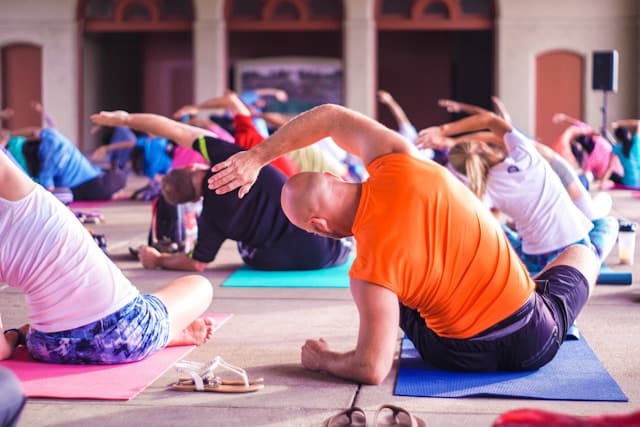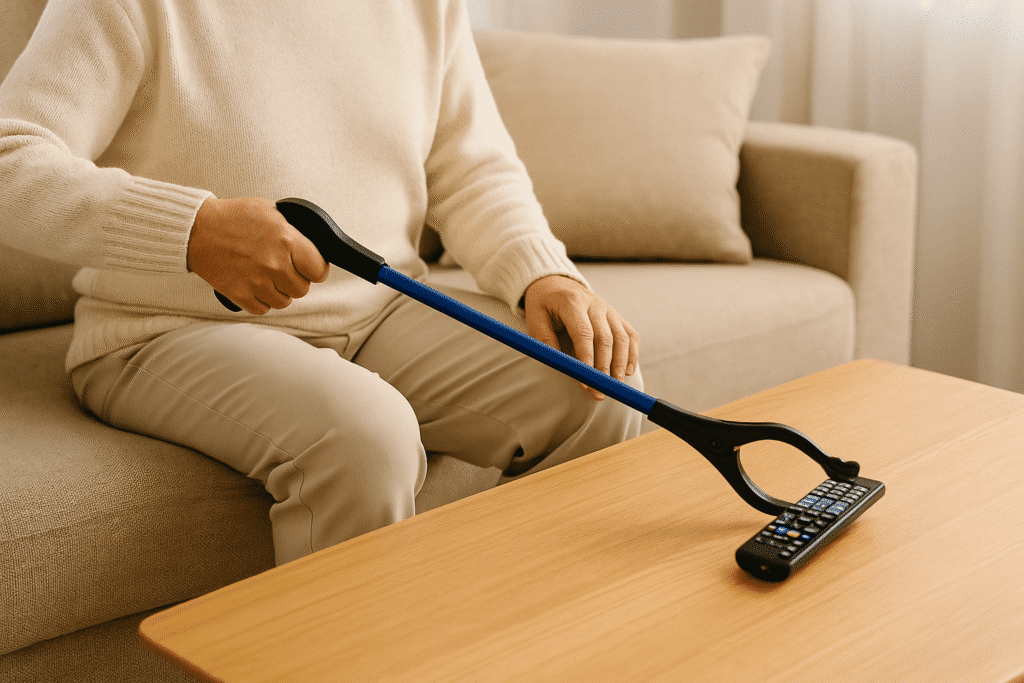Feeling weak or unsteady on your feet can make everyday tasks more difficult, especially as you age. Many older adults experience this change gradually, often due to muscle loss or low nutrient intake.
If you’re wondering what to eat for weak legs in the elderly or how diet can help you regain strength, this guide breaks it down clearly and simply, using foods you can easily add to your daily meals.
Key Takeaways:
- A balanced diet rich in protein, omega-3s, calcium, and vitamins D and B12 helps strengthen weak legs naturally.
- Sarcopenia (age-related muscle loss) is the leading cause of leg weakness in seniors, but it can be slowed with proper nutrition and activity.
- Including anti-inflammatory foods like salmon, walnuts, and leafy greens supports recovery and mobility.
- Combining a nutrient-rich diet, hydration, and gentle daily exercise can greatly improve leg strength and balance over time.
Common Causes of Weak Legs in Seniors
Weak legs in seniors are most often caused by age-related muscle loss, known as sarcopenia, along with nutrient deficiencies, poor circulation, or underlying health conditions. Over time, these factors make walking, standing, or climbing stairs more challenging.
According to CDC data, nearly 40% of adults over 65 have a mobility limitation, and 1 in 4 experiences a fall every year, often linked to declining muscle strength and balance.
Here are some of the most common causes:
- Sarcopenia: Gradual muscle loss starting in midlife and worsening with inactivity.
- Nutrient deficiencies: Low levels of protein, vitamin D, or B12 weaken muscles.
- Poor circulation: Conditions like diabetes or peripheral artery disease reduce blood flow to the legs.
- Lack of activity: Sedentary habits accelerate muscle loss and stiffness.
- Medication side effects: Some prescriptions can affect muscle tone or nerve health.
What to Eat for Weak Legs in the Elderly?
Older adults with weak legs should focus on foods rich in protein, omega-3 fatty acids, calcium, vitamin D, magnesium, and potassium. These nutrients support muscle repair, reduce inflammation, and keep bones and nerves strong.
I’ve seen firsthand how small, consistent dietary changes, like adding more protein and healthy fats, can help seniors move with more confidence.
Let’s look closely at the key nutrients your legs depend on every day.
Protein
Protein is the foundation of strong muscles. As we age, our bodies naturally lose muscle mass, a condition known as sarcopenia, but eating enough protein can slow this decline and even help rebuild strength.
A study shows that older adults who consume higher protein levels maintain better mobility and balance compared to those with low protein intake.
Protein helps repair muscle fibers, supports tissue recovery after movement, and keeps your legs stable for walking or climbing stairs.
Best sources include:
- Eggs, chicken, and fish for high-quality, complete proteins
- Greek yogurt, lentils, beans, and tofu for lighter or plant-based options
Try to include around 25–30 grams of protein per meal. Even a simple breakfast of eggs or yogurt with nuts can make a noticeable difference in strength and energy throughout the day.
Omega-3 Fatty Acids
Healthy fats like omega-3s do more than protect your heart; they help reduce inflammation that can damage muscles and joints.
Studies found that older adults taking omega-3 supplements gained more muscle strength after exercise than those who didn’t.
These fatty acids also improve blood flow, which supports recovery after activity and reduces soreness in the legs.
Good sources include:
- Fatty fish such as salmon, mackerel, or sardines
- Plant options like chia seeds, flaxseeds, and walnuts
If you’re not a fan of fish, try adding ground flaxseed to oatmeal or a smoothie a few times a week for similar benefits.
Vitamin D and Calcium
Vitamin D and calcium work hand in hand to keep your bones and muscles strong. Vitamin D helps your body absorb calcium, while calcium keeps your bones dense and your muscles contracting properly.
When these nutrients are low, legs can feel heavy, weak, or prone to cramping.
A study found that seniors with higher vitamin D levels had significantly better leg strength and lower fall risk. Spending time outdoors for sunlight exposure and eating calcium-rich foods both play a role.
Best sources include:
- Fortified milk, cheese, and yogurt
- Egg yolks and fatty fish
- Sunlight (15–20 minutes of exposure a day)
If you’re lactose intolerant, fortified plant-based milks or supplements can help meet your needs safely.
Vitamin B12
Vitamin B12 is essential for nerve function and energy production. Low levels of B12 are common in older adults and can cause fatigue, tingling, or weakness in the legs.
This happens because aging and certain medications (like acid reducers or metformin) make it harder for the body to absorb B12 naturally. B12 supports healthy nerve signals between the brain and muscles, helping with coordination and balance.
Good sources include:
- Fish, eggs, lean meats, and dairy
- Fortified cereals and non-dairy milks for vegetarians
If you’re not getting enough through food, your doctor may recommend a supplement or injection to restore energy and muscle control.
Magnesium and Potassium
Magnesium and potassium are two key minerals that keep your muscles functioning smoothly. They regulate contractions, prevent cramps, and support steady energy levels during movement. Low levels can cause fatigue or stiffness, which often show up first as leg weakness.
Potassium, meanwhile, helps maintain healthy nerve communication and hydration balance in muscle tissue.
Best food sources:
- Bananas, avocados, sweet potatoes, and beans
- Leafy greens like spinach or kale
- Whole grains and nuts for extra magnesium
A banana with breakfast or a spinach salad at lunch is a simple way to keep these minerals at healthy levels and help your legs feel more flexible and energized.
Read more: How to increase appetite in the elderly
What Are the Best Foods to Eat for Weak Legs?
The best foods for weak legs are those rich in protein, omega-3s, vitamins D and B12, calcium, magnesium, and potassium. These nutrients rebuild muscle strength, support bone health, and improve energy and balance in older adults.
If your legs often feel tired or shaky, simple dietary changes can make a big difference. Focus on wholesome, easy-to-digest foods that nourish your muscles and joints without heavy processing or excess salt.
Here’s a quick overview of what to include in your daily meals.
| Food Group | Examples | Why It Helps Weak Legs |
|---|---|---|
| Lean Proteins | Chicken, eggs, fish, Greek yogurt, tofu, lentils | Builds and repairs muscle tissue for better stability |
| Fatty Fish & Healthy Fats | Salmon, sardines, walnuts, olive oil, chia seeds | Reduce inflammation and support muscle recovery |
| Dairy or Fortified Alternatives | Milk, cheese, yogurt, fortified soy or almond milk | Provide calcium and vitamin D for bone and muscle strength |
| Fruits & Vegetables | Bananas, spinach, sweet potatoes, oranges, berries | Supply antioxidants and minerals that aid muscle function |
| Whole Grains & Legumes | Oats, quinoa, beans, chickpeas, lentils | Provide energy and steady blood sugar for daily movement |
| Hydration & Electrolytes | Water, coconut water, soups, herbal teas | Prevent dehydration and reduce leg cramps |
Sample Daily Meal Plan for Leg Strength
If you’re wondering what a full day of eating might look like, here’s a simple example that balances muscle-building nutrients with easy preparation.
- Breakfast: Scrambled eggs with spinach and whole-grain toast, plus a glass of fortified milk
- Mid-Morning Snack: Greek yogurt topped with chia seeds and berries
- Lunch: Grilled chicken or tofu salad with olive oil dressing, quinoa, and mixed vegetables
- Afternoon Snack: A banana or handful of walnuts for potassium and omega-3s
- Dinner: Baked salmon, sweet potato, and steamed broccoli
- Before Bed (optional): A cup of warm milk or soy milk for calcium and better sleep
How to Improve Weak Legs Naturally at Home for the Elderly?
Strong legs don’t just come from diet; daily movement and small habits at home can make a huge difference.
Here are a few simple ways to build strength safely:
- Walk regularly: Even short walks around the house or garden help improve circulation.
- Try chair exercises: Seated leg lifts or knee extensions are safe and effective.
- Do balance training: Stand behind a chair and practice gentle heel-to-toe walking.
- Stretch daily: Stretch calves, thighs, and hips to keep muscles flexible.
- Stay hydrated: Dehydration can worsen cramps and fatigue.
- Check home safety: Keep floors clutter-free and use grab bars to reduce fall risk.
Read more: Low-impact exercises for seniors
When to See a Doctor
If your leg weakness comes on suddenly or worsens quickly, it’s important to see a doctor. Sudden loss of strength or balance may indicate nerve, circulation, or medication-related issues that need medical attention.
You should also consult a healthcare provider if you experience persistent fatigue, numbness, pain, or swelling in your legs.
A doctor can check for vitamin deficiencies, circulation problems, or other conditions like diabetes or thyroid imbalance, and recommend treatment or therapy tailored to your needs.
Final Words
Weak legs don’t have to be a normal part of aging. With the right foods, regular movement, and simple self-care, many seniors can regain strength, balance, and confidence in their daily life.
Focus on eating protein-rich meals, adding omega-3 fats and calcium, and staying hydrated throughout the day.
Combine these habits with light exercise and a safe home environment to reduce fall risk and support long-term independence.
Even small improvements in your daily diet can lead to stronger legs, better mobility, and a greater sense of freedom, one meal and one step at a time.
FAQs
What’s the best vitamin for weak legs?
Vitamin D is one of the best vitamins for weak legs because it helps muscles contract properly and supports calcium absorption for bone strength. Low vitamin D levels are common in seniors and can cause fatigue or muscle pain, so getting sunlight or fortified foods can make a big difference.
Can weak legs get strong again?
Yes, weak legs can get strong again with consistent effort. A combination of protein-rich meals, gentle strength exercises, and adequate rest helps rebuild muscle tissue and improve stability in just a few weeks for many older adults.
Do bananas help with weak legs?
Yes, bananas are rich in potassium, which helps prevent muscle cramps and supports healthy nerve and muscle function. They’re also easy to digest, making them a great snack for quick energy and hydration support.
What should I avoid eating?
Try to limit salty snacks, processed foods, and sugary drinks, as they can increase inflammation and deplete important minerals like potassium and magnesium. Instead, focus on whole, natural foods that give your muscles long-lasting energy and strength.
Mark has over 10 years of hands-on experience in senior care. He founded ElderSavvy to provide honest, easy-to-follow advice on tools that support comfort, safety, and independence. Mark oversees all content and product reviews, guided by insights from caregivers, health professionals, and real-life use.









